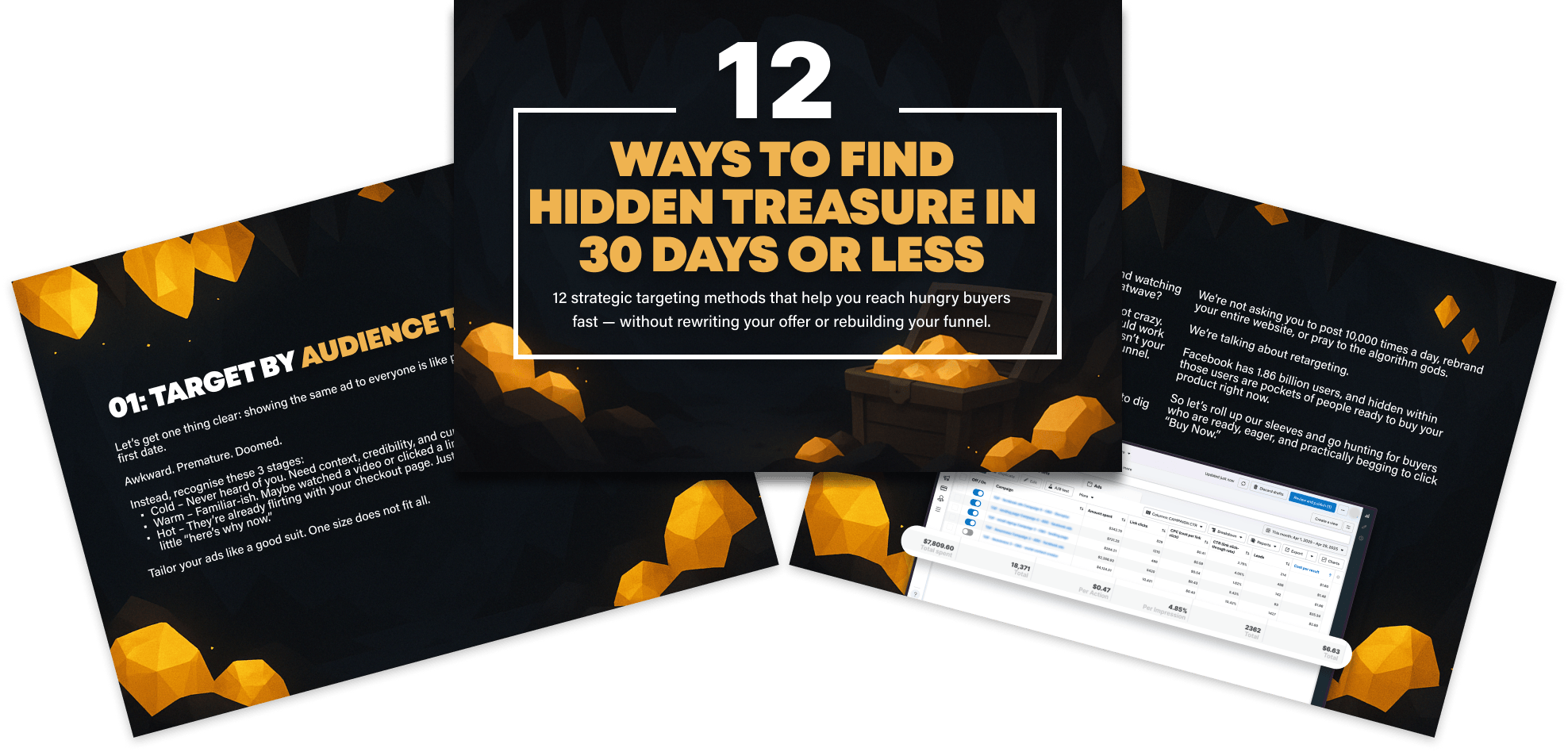How To Create Headlines That Are Good for Readers and Business
Jayframe Media | Content MarketingHeadlines are the unsung heroes of your content.
When they work well, they draw readers into your article, social video, podcast, and whatever other content you want to produce.
When they don’t, they keep audiences away from even the most compelling content.
Your headline does more heavy lifting than any other part of your content. It needs to attract your target audience, give a glimpse of what the article offers, reflect your brand voice, hint at the purpose, and still be intriguing, accurate, and concise. That’s a lot of work for just a few words. Ready to dive in?

The rules that you should always follow when writing are:
1. The first line has to give me the post, or at least the gist of the post.
2. Don’t make them think
Writing is 90% psychology, and 10% formatting, and basic catering to the specific platform you’re writing for.
To Get us started, when writing content–the hook is the most important element to focus on. We would go as far as to say, that the rest of the content does not matter if you don’t get the hook right!
The Hook
Okay so let’s get into it. Your headline is the first thing people see, so it needs to grab their attention immediately. Think of it as the storefront of your content—if it looks boring, no one will come inside. Start with something provocative, a bold statement, or an intriguing question that piques curiosity. For example, “These are the 3 biggest mistakes most _______ make?” pulls the reader in by sparking their curiosity and making them want to find out more. Remember, the goal is to make your audience stop scrolling and start reading.
In order to simplify the hook writing process. I try to simplify it to a point that anyone can do it.
The way that i write hooks is i first ask myself, “what is the one thing that i want my reader to learn from the post?”. If they could skip the entire rest of the post or video. and they could just read that one line–what do you want to tell them in that one line.
A lot of the times, the answer to that question could be your hook, directly.
So for example, if i’m writing a post about a specific posting strategy that I implemented to gain new followers, to gain inbound leads, and new clients. What is the one thing that I want you to know about that this particular posting strategy. I might say something like “this is the easiest posting strategy that you can apply today”, or “this is the best posting strategy to gain new followers”.
The hook if done right, at the beginning of the post, it makes that promise and by the end of that post, it delivers on the promise.
A good headline should capture attention.
Alright, so the primary function of a headline is to make the reader stop and look. It’s like a billboard on a highway—if it’s interesting enough, people will notice. A well-crafted headline can intrigue and entice readers, compelling them to dive into your content. For example, “Steal these 6 SEO secrets” immediately promises valuable insights, drawing in anyone interested in improving their SEO strategies.
Characteristics of a powerful headline
Creating a headline that stands out requires certain key characteristics. Let’s break down what makes a headline truly powerful.
Clarity and Relevance
A great headline should be clear and directly relevant to the content it introduces. Avoid vague or overly complex language. Readers should immediately understand what the article is about and why it’s worth their time. For instance, “The reason you’re not sleeping is because of ______” is clear and directly tells the reader what to expect.
Emotional Appeal
Emotional appeal is about tapping into the reader’s feelings. Whether it’s curiosity, excitement, fear, or joy, a headline that triggers an emotional response is more likely to draw readers in. An example could be, “I did X thing, and immediately Y happened”.
Use of Strong, Action-Oriented Language
Action-oriented language makes your headline dynamic and engaging. Words like “stop,” “unlock,” “discover,” and “steal” encourage readers to take action and imply that your content will help them achieve something significant. For example, “These 3 secrets exploded my productivity” promises actionable insights.
Tips for Crafting Effective Headlines
Crafting a headline that grabs attention and drives engagement involves several key strategies.
Let’s dive into some effective tips:
Know Your Audience
Understanding your audience is crucial. What are their interests, needs, and pain points? Tailor your headlines to speak directly to them. For example, if you’re targeting fitness enthusiasts, a headline like
“you’re not losing body fat because of 3 simple things”
will resonate more than something generic.
Use Numbers and Lists
Numbers and lists promise clear, structured content. Headlines like
“my videos exploded when I implemented this one thing” or “Sleep better with these 10 tips.”
attract readers because they know exactly what to expect.
Ask Questions
Questions engage readers by sparking curiosity or addressing their concerns. A headline like
“are you wasting your time on repetitive tasks?”
invites the reader to find out more and engage with your content.
Include Keywords for SEO
Incorporating relevant keywords helps your content get discovered by search engines. Tools like Google Keyword Planner can help identify popular search terms. For example,
“Unlock the Secret to Flawless Skin with These Expert-Approved Skin Care Routines!”
uses specific keywords to improve SEO.
Test and Refine Your Headlines
Creating the perfect headline often involves a bit of trial and error. Use A/B testing to experiment with different headlines. You can see which ones perform best. Tools like CoSchedule’s Headline Analyzer can provide feedback and suggest improvements. Pay attention to metrics like click-through rates and engagement to gauge effectiveness and make necessary adjustments.
Common Mistakes to Avoid
We made it to the section that most people like to pay attention.
Creating effective headlines means steering clear of some common pitfalls. Here are a few mistakes to watch out for:
Being Too Vague or Generic
Headlines need to be specific and provide clear value. Avoid generic phrases like “Tips for Success” that don’t tell the reader much. Instead, be precise and direct, such as “5 Proven Tips to boost your callbacks”
Clickbait Techniques
While clickbait can drive clicks, it often leads to disappointment if the content doesn’t deliver on the promise. Misleading headlines will harm your credibility and trust with your audience. Ensure your headlines are intriguing but accurate. Your headline MUST BE WHAT THE POST IS ABOUT. It should pose a question, and the content should answer it.
Ignoring the Target Audience
Tailor your headlines to your specific audience. A headline that works for one group may not resonate with another. Always consider who your readers are and what interests them. For example, a technical audience might prefer “How to Optimize Your Code for Better Performance,” while a general audience might find it too niche.
Tools to keep you on track
Crafting the perfect headline often requires some extra help. Here are a few tools and resources to enhance your headline creation process:
Writing headlines and content for matter doesn’t have to be difficult. If you play by the rule that,
The first line has to give me the post, or at least the gist of the post. and ask yourself the simple question,
“what is the one thing that i want my reader to learn from the post?” –
You’ll pretty much be able to write your whole post based on that answer.
Writing is 90% psychology, and 10% formatting, and basic catering to the specific platform you’re writing for.
The hook if done right, at the beginning of the post, it makes that promise and by the end of that post, it delivers on the promise.
But if you need more help, you can use some simple tools and frameworks to write better headlines, and better content.
Headline Analysers
Headline analyzers can provide instant feedback on your headlines, helping you refine them for maximum impact. Tools like CoSchedule’s Headline Analyser and Sharethrough Headline Analyser evaluate elements such as word balance, emotion, and readability to ensure your headlines are strong and engaging.
Framework
Using a structured approach can streamline your headline and content creation. One effective framework is S.T.E.P:
- S = Story
Attract attention with an engaging hook, for example, “this is exactly how I …” - T = Trasformation
Say 1 to 2 sentences about a pain you had, that your viewer has now, and overcame, for example, “when I first started on social, I struggled with x until I realised y.” - E = Explain
Explain how you solved that problem in 3-5 steps, for example, “first I did this, Then I did that…” - P = prompt
Prompt the viewer to do an action, this could be “like and follow, comment a word for a lead magnet…”
Readability
One last thing I’ll throw in here is the importance of clear and concise communication! Even if your writing content for you to film, it can be helpful to use apps that can analyse the writing to ensure that your message is clear and engaging. The Hemingway App is an excellent tool for this, helping to simplify and clarify your language.
And that’s a wrap on today’s Re_Frame
I hope you found these insights as helpful. Whether you’re running your own business, part of a savvy marketing team, or rocking it as a freelance creator, adapting to new ideas is key. Keep hanging out with us here at The Re_Frame for more industry insights. Until our next chat, keep creating, keep innovating.Until next time.

